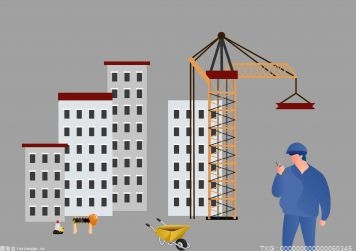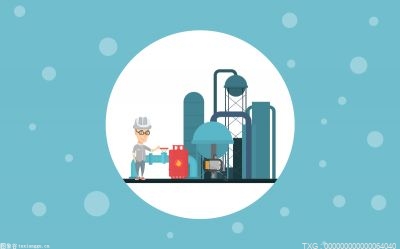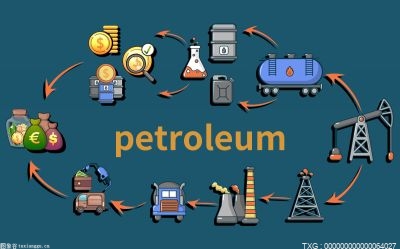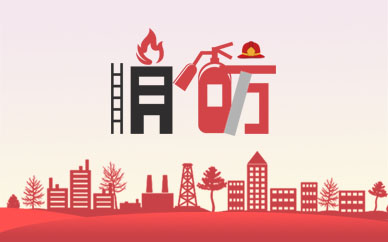市场预计中东地区陆上钻探将蓬勃发展
中国石化新闻网讯 据能源之声网站5月17日报道,据能源市场研究和咨询公司韦斯特伍德全球能源集团(Westwood Global Energy Group)预测,到2027年,海湾合作委员会(GCC)地区的钻探需求较2019年将增长53%。
 (资料图片)
(资料图片)
根据预测,随着沙特阿拉伯和阿拉伯联合酋长国计划提高产能,中东陆上钻探公司将迎来繁荣时期。
据陆上能源服务高级分析师托德·詹森(Todd Jensen)的一份报告预测,到2027年,中东GCC地区对陆上钻机的需求将达到25%。
该机构表示,中东和北非(MENA)目前有1159台陆地钻机。其中,GCC有526台,占中东和北非地区的45%。另外北非有317台,中东非GCC有316台。
GCC成员国的需求在疫情低迷期间保持“相对稳定”。到2022年,钻探活动恢复到2019年的水平。
据预测,到2027年,GCC地区的钻机需求较2019年将增长53%。这将受到所有主要陆上生产商产能增加的推动,许多所需项目已经通过了FID,证实了预测。
同期,中东非海湾合作委员会国家的需求将下降12%,而北非将增长8%。
GCC也将在钻探机械利用率方面引领中东和北非地区。2023年,GCC成员国的利用率将达到70%,2027年将升至78%。中东和北非地区今年的平均利用率为39%,到2027年将上升至42%。
其他利用率上升显著的国家包括阿尔及利亚,从47%上升到60%,伊拉克从37%上升到46%。这两个国家低于GCC的“强国”,但“两者都有很大的上升潜力”。
阿尔及利亚正受益于其与欧洲的天然气出口计划。伊拉克“设定了雄心勃勃的生产目标,这将需要大幅提高其钻机的利用率,远远超出韦斯特伍德目前的预测”。
费用率竞争
沙特阿美和Adnoc通过各自的附属公司主导本国的钻探市场。然而,更有意义的是,国际承包商也还有发展的空间。
韦斯特伍德指出,一家全球石油巨头在该地区拥有80台陆地钻机,是最多的,其中44台在科威特。与此同时,KCA Deutag收购了Saipem的陆上钻机队,使其钻机数量从45台增加到77台。
GCC国家的钻机马力更大,日费率更高。北非地区日均费率为1.8万美元,而GCC地区日均为2.3万美元。
阿联酋的钻机费用率最高,有些达到了4万~4.5万美元。然而,Adnoc Drilling公司的主导地位“限制了国际承包商竞争合同的能力”。
本周公布了第一季度业绩的Adnoc Drilling公司,称其陆上收入同比增长11%。该公司最近同意购买10台新的混合动力陆地钻机。
郝芬 译自 能源之声
原文如下:
Onshore drilling to boom in Middle East, Westwood predicts
By 2027, rig demand in the GCC area will be 53% higher than 2019, Westwood’s Jensen predicted.
Onshore drillers are poised for boom times in the Middle East, as Saudi Arabia and the United Arab Emirates aim to boost capacity, Westwood Global Energy Group predicts.
A note from senior analyst onshore energy services Todd Jensen predicts 25% demand for land rigs in the Middle East GCC to 2027.
The Middle East and North Africa (MENA) currently have 1,159 land rigs, Westwood said. Of these, 526 units are in the GCC, or 45% of the MENA fleet. Another 317 are in North Africa and 316 in the non-GCC Middle East.
Demand in the GCC states stayed “relatively steady” during the pandemic downturn. By 2022, activity was back at 2019 levels.
By 2027, rig demand in the GCC area will be 53% higher than 2019, Westwood’s Jensen predicted. “This will be driven by production capacity increases at all major onshore producers, with many of the projects required already having passed FID, supporting the forecast.”
Over the same period, the non-GCC states in the Middle East will see demand drop 12%, while North Africa will have an increase of 8%.
The GCC will also lead MENA in terms of utilisation. GCC states will have utilisation of 70% in 2023, rising to 78% in 2027. MENA will average 39% this year, rising to 42% by 2027.
Other bright spots include Algeria, which will increase from 47% to 60%, and Iraq, rising from 37% to 46%. These two countries are below the GCC “powerhouses”, Jensen wrote, but “there is significant upside potential to both”.
Algeria is benefiting from its gas export plans with Europe. Iraq has “set ambitious production targets, which will require a major increase in utilisation of its fleet, far beyond Westwood’s current forecast”.
Rate race
Saudi Aramco and Adnoc dominate drilling markets in their home turfs through their own affiliates. More broadly, though, there is scope for international contractors.
A global magnate has 80 land rigs in the region, the largest, Westwood noted, with 44 in Kuwait. Meanwhile, KCA Deutag’s purchase of Saipem’s onshore drilling fleet has taken it from 45 to 77 rigs.
The GCC countries have rigs with more horsepower and dayrates are higher. Where in North Africa, dayrates have averaged $18,000, in the GCC the average is $23,000.
The highest rates are seen in the UAE, with some reaching $40,000-45,000. However, Adnoc Driling’s dominance “restricts international contractors’ ability to compete for contracts”, Jensen said.
Adnoc Drilling, reporting its first quarter results this week, said its onshore revenues were up 11% on the year. In a sign of its expectations, the company recently agreed to purchase 10 new hybrid-powered land rigs.
(责任编辑:黄振 审核:蒋文娟 )X 关闭
推荐内容
- 海南:迈湾水利枢纽工程进展顺利
- 与“世”偕行 共赢未来——从进博会看中国“入世”20年
- 北京迎来初雪 气温急剧下降
- 推进历史学与考古学融合发展(史家笔墨)
- 文化遗产保护的可贵探索(传承之光)
- 北七家镇和区市场监管局10名干部被问责
- 今日立冬:北风潜入悄无声,未品浓秋已立冬
- 民航局:严格执行国际客运航班熔断措施 今年已熔断航班4
- 税收服务提质增效 外资企业畅享政策红利
- 政策红利“精准滴灌” 税收服务“护航”进博会
最近更新
-

市场预计中东地区陆上钻探将蓬勃发展
资讯 -

中国新任驻美大使谢锋:期待与美国各界一起为中美关系思与行、鼓与呼
资讯 -

蓝思科技(300433):5月23日北向资金增持21.49万股
资讯 -

Adobe Dimension(Dn)2022软件安装包和安装教程
资讯 -

表白诗我喜欢你藏头诗_表白诗我喜欢你
资讯 -

抢救式传承“平湖派”琵琶艺术初见成果_环球关注
资讯 -

“氢”装上阵!陕西氢能《国家级工业绿氢示范基地规划研究》等评审会召开
资讯 -

市州观察|遂宁经开区用心打造服务品牌 招聘活动“周五见”
资讯 -

前沿资讯!首次签约17家!张家界大众医院协作成员单位启动仪式举行
资讯 -

西安多举措推进企业上市:最高奖1000万元-天天动态
资讯 -

浙江湖州:吴兴以城市最高礼遇向人才致敬-焦点
资讯 -

世界实时:河北召开化学品网络监管会议
资讯 -

【全球新视野】女汉子的真正含义 女汉子是什么意思
资讯 -

总台海峡时评丨涉台提案再被拒,挑战一个中国原则必然失败!|天天速递
资讯 -

1158万人!今年高校毕业生数量再创历史新高!找工作更难了...
资讯 -

鹤壁:长城社区开展《反有组织犯罪法》和《信访工作条例》宣传活动
资讯 -

OpenAI提议像管核设施一样管AI!马斯克极力赞同_天天快报
资讯 -

开灯后灯泡一闪一闪是什么原因_开灯后灯一闪一闪的是什么原因 天天快资讯
资讯 -

骆驼奶粉的功效与作用及禁忌(骆驼奶粉的功效与作用)
资讯 -

1.35米床尺寸长是多少
资讯 -

应急管理部:厘清并压实氢能等新业态安全监管职责-每日动态
资讯 -

全球观察:“热爱科学 崇尚科学”2023年临汾市科技活动周启动
资讯 -

中兴通讯总裁徐子阳:本轮数智产业变革将面临更加有限的时间窗
资讯 -

福州至台湾航线复航_当前短讯
资讯 -

佛山市市委书记郑轲莅临糊涂酒业调研
资讯 -

生态文明建设再添一张绿色名片 通化获评“中国践行绿色发展‘新标杆’”
资讯 -

重点聚焦!年入230亿元的i茅台:砍向经销商的一把“钝刀”
资讯 -

今日视点:俄方证实:乌军攻入俄境内!普京已知悉
资讯 -

天天快播:用白醋洗脸放多少醋_白醋洗脸用什么醋最好
资讯 -

对"病驾"踩刹车
资讯 -

安全文明措施费比例2% 安全文明措施费比例
资讯 -

热推荐:韩网梳理的各赛区选手对Uzi的评价 Ruler:全方面完美的选手
资讯 -

加拿大英属哥伦比亚大学怎么样_加拿大英属哥伦比亚大学
资讯 -

felixstowe是属于英国哪个城市_felixstowe 当前快报
资讯 -

钨精矿、仲钨酸铵、钨铁最新价格
资讯 -

夏季达沃斯来了!世界智能大会圆满落幕,下一个盛会即将开启
资讯 -

临夏县高原夏菜供应东南沿海等地|热点聚焦
资讯 -

天蓝水清生物多,崇左生态名片越来越“靓” 每日简讯
资讯 -

投资者有必要参与股票分红吗 股票分红的优缺点分别是什么_环球热头条
资讯 -

纪录电影《加油吧!乡亲们》上映 展现乡村振兴感人故事 环球今头条
资讯 -

四冲_关于四冲的介绍
资讯 -

湖北英山残联为残疾人发放创业就业奖励扶持资金5.5万元
资讯 -

亳州利辛县教育局“严党风校风 正师德师风”优秀师德事迹宣讲完美落幕|每日速递
资讯 -

什么是城濮之战?它的读音是什么? 天天快看点
资讯 -

本周相当清凉,26日至28日还有一场强降水
资讯 -

资讯推荐:瑊玏的意思_瑊
资讯 -

当前关注:世界卫生大会再次拒绝涉台提案
资讯 -

智能车载领域逐步成熟,思必驰突破技术难关 天天热消息
资讯 -

快资讯:中国电研:公司会在西南地区成立区域检测中心
资讯 -

一脉阳光赴港上市:三年亏超5亿元,未来将强化教育培训?_世界看热讯
资讯 -

焦点日报:AI诈骗正在全国爆发 骗子使用AI换脸冒充好友诈骗430万
资讯 -

环球观察:总台专访丨南非国民议会副议长:谴责美元霸权 呼吁本币结算
资讯 -

隐私空间设置打不开(空间打不开了怎么办) 环球报道
资讯 -

当前速讯:从一场特殊的告白,看见极狐的走心价值
资讯 -

凤凰深调|这届年轻人的伤口,在寺庙里愈合
资讯 -

5月22日常州新阳科技苯酐价格暂稳
资讯 -

每日速讯:江苏师范大学商学院2023年硕士研究生招生调剂公告
资讯 -

台风玛娃最新消息:2023年2号台风路径实时发布系统
资讯 -

乡村振兴,要有“田秀才”也要有“乡创客”
资讯 -

我国深远海风电关键技术取得重大进展 “海油观澜号”成功并网投产
资讯 -

法甲-大巴黎做客2-1欧塞尔末轮平即夺冠,姆巴佩双响梅西助攻|视焦点讯
资讯 -

天天最新:外汇局:上半年我国经常账户顺差10777亿元 资本和金融账户逆差7747亿元
资讯 -

麻油猪肝的做法有哪些(麻油猪肝的做法有哪些窍门)
资讯 -

系统之家雨林木风好吗_系统之家雨林木风 世界新要闻
资讯 -

大轮换翻车!国米不敌那不勒斯,领先第五名米兰2分_每日快看
资讯 -

《英雄联盟》2023 MSI决赛JDG对战BLG!首发名单出炉:萍乡第一中单之争
资讯 -

小牛MQi L电动车售4999起
资讯 -

热议:马斯克宣布将卸任推特 CEO 后,广告业务开始回暖 当前资讯-当前头条
资讯 -

长城人寿总经理王玉改:解决客户的养老需求需要聚焦于家庭风险
资讯 -

moto razr 系列新机更多信息曝光,或配备开孔外屏
资讯 -

娱乐圈的“残酷”在6位未婚生育的女明星身上体现的淋漓尽致!_今日聚焦
资讯 -

环球热门:证明信写作格式及范文_证明信写作格式及范文介绍
资讯 -

世界热讯:武汉社保局咨询电话(武汉社保局咨询电话)
资讯 -

中国电信手机查话费_电信手机查话费打什么号码
资讯 -

环球快讯:瓦子口葱_关于瓦子口葱介绍
资讯 -

气质类型
资讯 -

抚州市气象台发布暴雨黄色预警信号【III级/较重】【2023-05-21】|热门看点
资讯 -

常开老和尚_常明法师 长安兴教寺常明老和尚
资讯 -

葡萄牙超级杯_关于葡萄牙超级杯的简介_世界热文
资讯 -

加速创新要素“裂变反应” 天天即时看
资讯 -

海蓝色cmyk多少钱_海蓝色cmyk
资讯 -

世界新消息丨与半裸女尸同睡两个月,直到恶臭难闻才发现,河南酒店床底藏尸案
资讯 -

速读:钥匙折在锁眼里怎么办视频_钥匙折在锁眼里怎么办
资讯 -

全球微动态丨密西西比河的黎明阅读答案_密西西比河上的黎明
资讯 -

曾赟_对于曾赟简单介绍_环球热闻
资讯 -

为什么巴沙鱼没有刺 巴沙鱼没有刺的原因 每日速读
资讯 -

网红“三千哥”直播PK喝酒后去世,友人:喝了至少四瓶白酒
资讯 -

花垣县市场监管局开展“企业赋码”试点工作 创新智慧监管机制
资讯 -

今年的中超很可能在全部广州进行 足协杯则有可能停办一年_世界聚焦
资讯 -

口臭怎么治最有效的方法女生(口臭怎么治最有效的方法)_焦点速读
资讯 -

马甲里面穿什么好看点_马甲里面穿什么好看
资讯 -

天天视点!2020年欧联杯赛程积分查询(2020年欧联杯赛程)
资讯 -

一地突发7.7级地震!
资讯 -

少年中国歌词简谱_少年中国歌词华语群星
资讯 -

湖北法院5年向残疾人发放2.64亿元司法救助金 全球新动态
资讯 -

昆仑万维成为北京市首批模型伙伴和投资伙伴 全球微速讯
资讯 -

全球快看点丨【国际博物馆日遇鉴云南】缅甸绿釉象陶烛台
资讯 -

兰州市科技青年联谊会成立-精选
资讯 -

每日信息:中国民航大学_中国航空大学
资讯 -

焦点播报:德班首日赛程!国乒6人出战,梁靖崑冲开门红,马龙陈梦有望大胜
资讯
Copyright © 2015-2022 南非餐饮网版权所有 备案号:沪ICP备2022005074号-13 联系邮箱:58 55 97 3@qq.com


